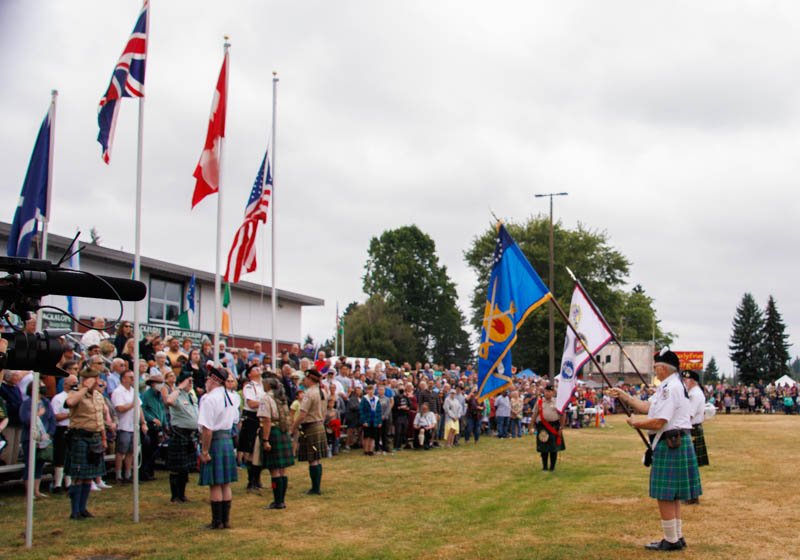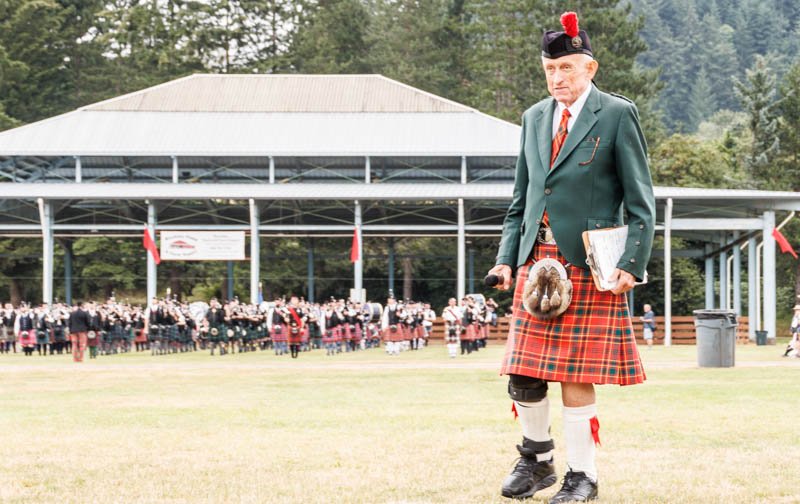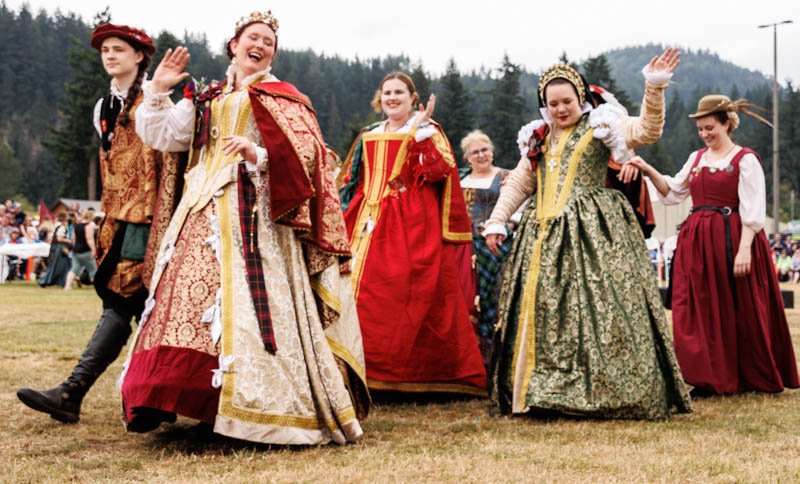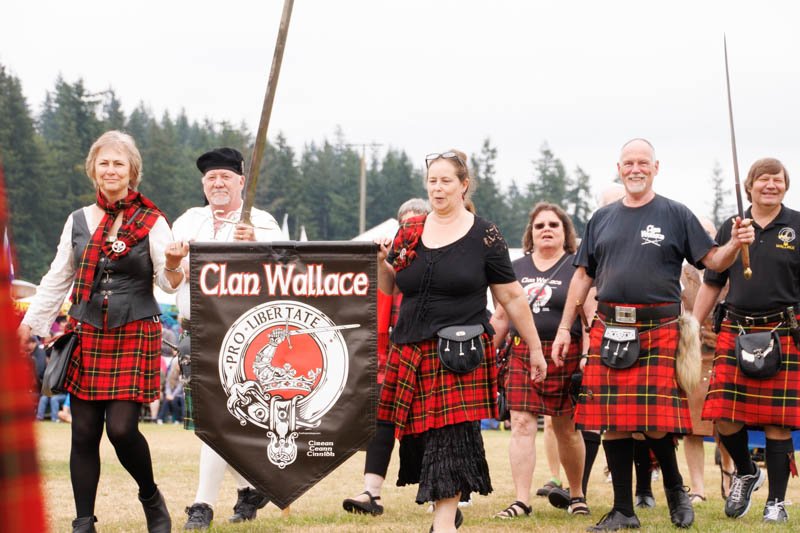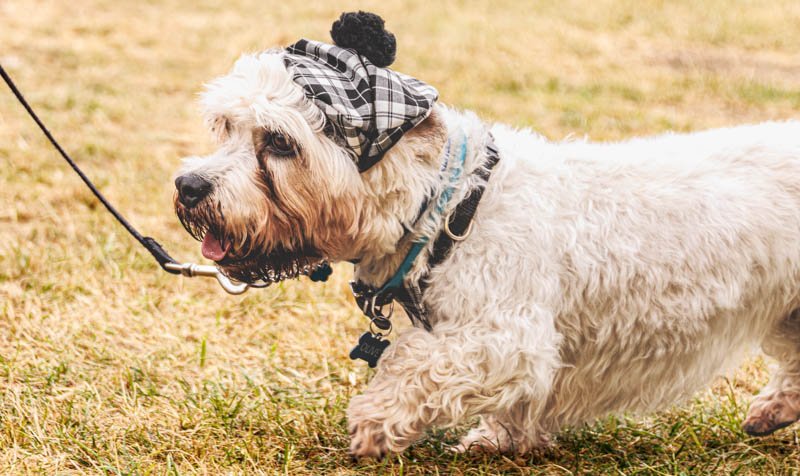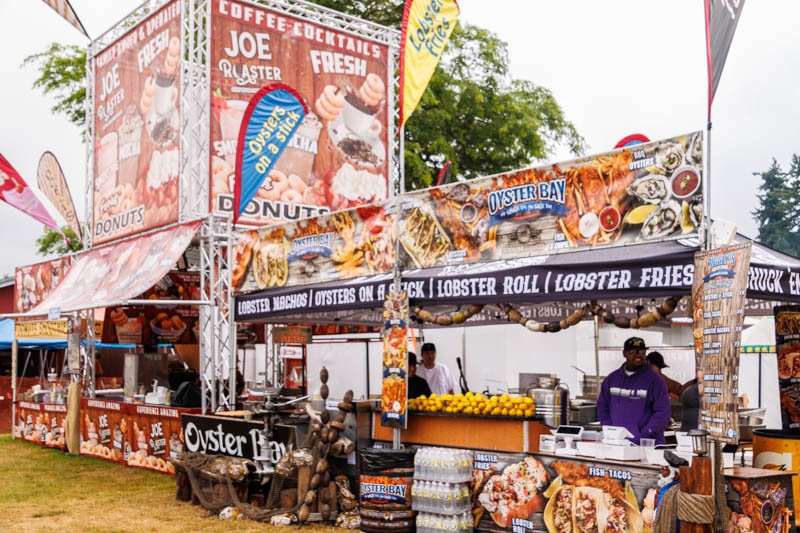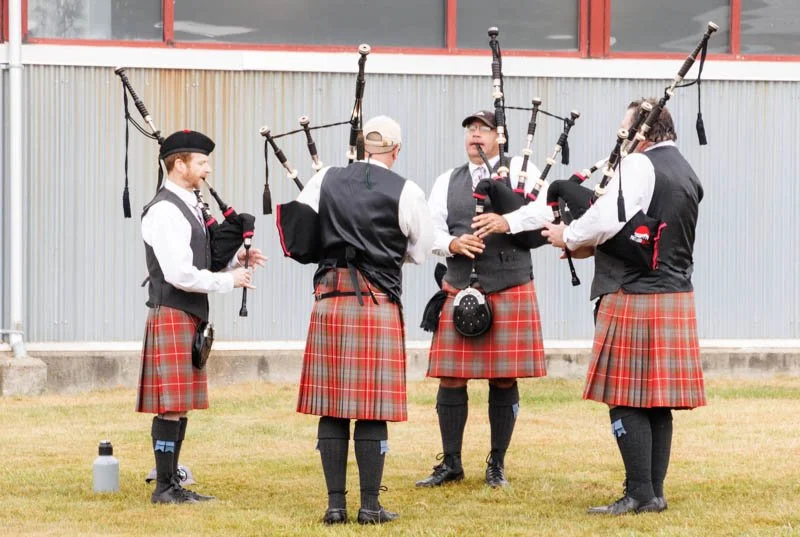Scottish Highland Games
The Scottish Highland Games are like the Olympics for the Scottish and Celts as a way of celebrating their cultures and traditions. Going back to the 11th century AD in Scotland, the games were designated at the time specifically as a sporting event. However, their origin was actually in Ireland as the Tailtieann Games, in the 1500 BC. But as the Irish moved to Scotland, they brought the basic games with them which were enhanced by the addition of the games as we know them today.
In 1848 Queen Victoria and Prince Albert visited the games at Braemar, Scotland which increased the popularity of the games, from which they began to expand to multiple locations throughout Scotland. By the end of that century Scots were migrating to countries outside of Great Britain, bringing the games with them. They grew rapidly throughout the world. The first games in the U.S. were in New York, sponsored by the Highland Society of New York in 1836 and in San Francisco in 1965. The Seattle Scottish Highland Games Association was founded in 1947. The games have taken place in many different locations in the Seattle area, including its current home at the Expo Center in Enumclaw.
There are three elements to the Highland Games: heavy athletics, dance, and piping and drumming. Each is a separate competition in its own right.
Heavy Athletics
Heavy athletics represent the men (and now women) testing their strength, endurance and agility. Kings and chieftains used these games to select the best men for their attendants. The different types of weights evolved from items that were available to the early Scots hundreds of years ago. I was amazed at the strength and coordination of the athletes knowing the weights of their thrown objects and the distance they were aiming for. These are some strong men and women!
The sports include:
Putting the Stone – originally using a smooth rounded stone from a nearby riverbank, it’s a bit like the shot put in the Olympics
Scottish Hammer – the athlete stands backward and winds the hammer up around their head
Weight for Distance –the athlete spins to prepare and throw a stone like a discus thrower
Weight for Height – the weight is tossed one handed over a cross bar. The bar is raised in increments.
Sheaf Toss – a bundle of straw protected in a burlap bag is thrown with a pitchfork over the same cross bar as is used for Weight for Height.
Caber Toss – Unfortunately, this is the only one I missed. The athlete lifts it up a 17-22 feet long vertically, balances it with their hands underneath, and heads toward an imaginary clock where they stop at the six o’clock position, then tosses it to flip over end over end toward the twelve o’clock position, which would be a perfect score. It is judged on accuracy, rather than distance. Points are deducted if the log lands off to the right or left.
Highland Dance
As in the Heavy Athletics, the Highland Dances, as athletic events, have several different events that are judged. The Highland Fling is a dance of victory in battle where the warriors and clansmen danced on the small, round shield which they carried into battle. The Gillie Calum was also an ancient dance of war of the Scottish clans. It is one of the oldest and better-known dances. The Seann Triubhas, translated as “old trousers” because of the movements that depict the act of shedding one’s britches. The Reels are the closest to social dancing . They originated with well-wishers waiting for a minister to arrive at a wedding. They danced to keep warm. The Sailor’s Hornpipe was very popular among seafaring men, that it acquired its name from them. It’s usually danced wearing sailor costumes, imitating some of the shipboard activities such as rope hauling and climbing lines. The Irish Jig is not limited to Ireland but is also danced at the Highland Games more of a parody of an agitated Irish person.
Piping and Drumming
Scottish Pipe Bands consist of pipers, tenor drummers, snare drummers, bass drummers and a drum major. There are usually two pipers for every tenor drummer. It’s not unusual to have only one bass drummer, and there are often more than one snare drummer. Pipe bands find their history in the military. Drums helped the soldiers keep time and to indicate tactical movements. Drums in the military go back to ancient times, yet bag pipes only back to the 17th century. Typically pipe bands play Scottish or Irish music, but pipe banks have more recently appeared with western musicians including the Red Hot Chili Peppers.
There are four competition categories of piping and drumming – Individual Piping, Individual Drumming, Drum Section, and Pipe Bands. In general, they are judged for things like the sound of the instrument, blending of tones, musical expression, playing ability, and choreography. The Pipe Band competition at all levels took place immediately following the Opening Ceremonies on Saturday afternoon..
Opening Ceremonies
The Opening Ceremonies took place at 12:30 each day. They open with three Pipe Bands entering together and officers and dignitaries of the games. This is followed by the national anthem of each country led by several talented singers, and the raising of the flags of each country. The pipe bands are standing at attention throughout the flag ceremony after which they retreat in a very orderly fashion. The Master of Ceremony was Ralph Munro, the former Washington State Secretary of State and past president of Clan Munro.
Following the flag ceremony is the parade of the Games’ Royals and the Clans, led by a single piper. The piper was one who has led the parade for many years. However, on this day, as he was following his route around the arena, his kilt dropped to his feet. He responded with a big smile and laughter and was just as cheerful when it happened a second time. He certainly handled potentially embarrassing situations with humor and grace.
The rest of the parade was void of such surprises. It included the Games’ royalty including Her Majesty the Queen and her court, and followed by all 27 of the clans with their members who were attending the games. Even pets were donning the colors of their clans.
Everything Else
In addition to the competitions and the Opening Ceremonies, there was so much more. There were four stages around the venue with performances, both traditional and contemporary rotating throughout the day, playing Scottish and Celtic music, from 10:30-4:30 each day. In addition, there were several bands playing in the evening in the “Rampant Lion Pub”.
Each of the clans represented at the Games had an exhibit table containing a variety of information about their group. When I was asked to what clan I belonged, I admitted that I was not Scottish. I was then told that I was an official member of the McAnything clan. There were 22 artists and other vendors selling their wares. And there was no shortage of food from stuffed pies to turkey legs.
I think the kilts and the accessories that go with them were my favorite. The color combinations were broad, from red and green which we often see to turquoise and purple which is much less common. It was fun to see the male athletes adjusting their kilts while they were spinning around and throwing their heavy objects. Some just held their kilts up, several tucked portions of their kilts into their underwear, and some just didn’t seem bothered. The women didn’t seem to have any issues with their kilts.
Every unscheduled space at the arena was taken by pipers - individuals, small groups and full bands practicing for their turn to compete. It was rare time that you didn’t hear the sound of bagpipes coming from some direction.
There was so much to see and every time I turned around I saw something new. The Games take place in Enumclaw every year and if you haven’t gone before, consider going in 2023.






